Step right up, folks. It’s the embroidery horror show! Got your attention? This topic lurks under the surface but rears its ugly head in the wrong places from time to time…
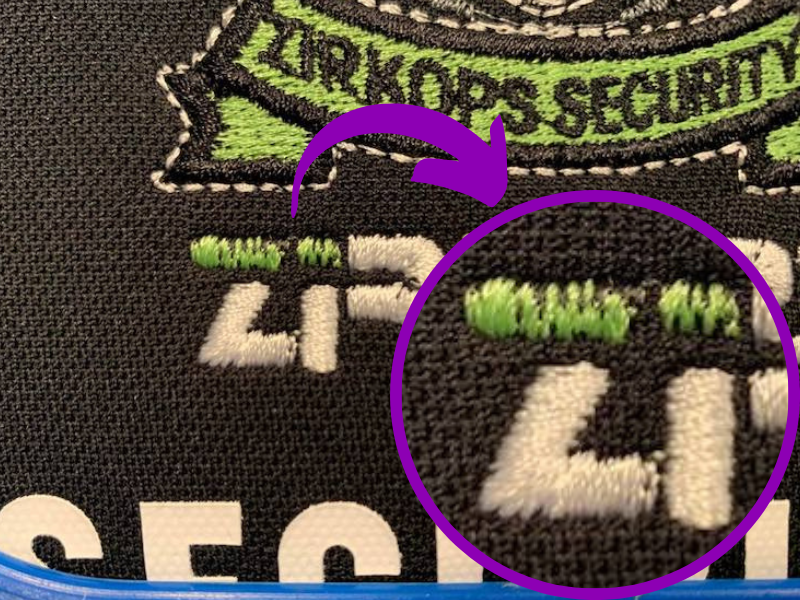
What is that scary situation? It happens when you see the bubbly bobbin thread on top as it peeks at the edges of letters and objects. How can we stop it, and why does it happen?
If you have ever used a black bobbin thread under a white stitch-out, you may have seen those annoying little loops of black bobbin edging your white design. If this has happened, you’ve experienced bobbin problems. Your bobbin thread should not be showing on the top of your design.
Bobbin thread showing on top of your design can be caused by a few factors, including when you stitch very narrow satin stitch or narrow tatami stitch lines and when there are tension or lint debris issues with your machine.
Bobbin Thread In Embroidery (what it’s Used for & Why)
Sewing and embroidery machines use a “lock stitch,” which twists the top and bottom thread together by turning the bobbin past the needle as it dips into the machine to create an embroidery design. The bobbin is usually plastic for home machines and metal or paper for embroidery machines.
Bobbin thread is relatively thin, generally 60 wt (remember the higher the number, the thinner the thread), and most often sold pre-wound in white or black. It is very strong and usually not twisted like other threads; it is a single long strand called monofilament.
Why Is My Bobbin Thread Showing On Top?
There are many reasons why your bobbin thread can show on the top, but here are the top three reasons:
- The bobbin is incorrectly seated, going the wrong way, and not correctly running through the tension spring. Refer to your manual, but a good rule of thumb is that it doubles back on itself. Here is what it usually looks like:
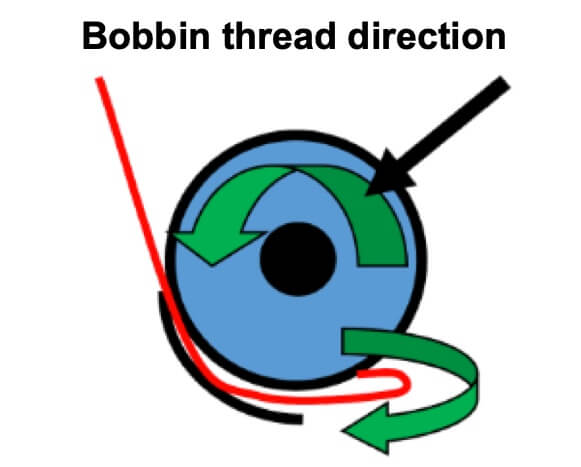
- The bobbin tension is too loose (or the top tension is too tight). This is a tricky one! There is a friendly tug of war in a sewing or embroidery machine, and the goal is for the bobbin to be a bit greedy and pull that top thread down underneath a little! Don’t try to adjust your settings without consulting your manual, and if the problem is severe, check with your dealer or repair shop.
- Know about your machine’s tension. A simple “H test” will tell you a lot of information about what is going on under there. Many embroidery machines have this available within the machine. If not, you can create an embroidery file with Capital Hs.
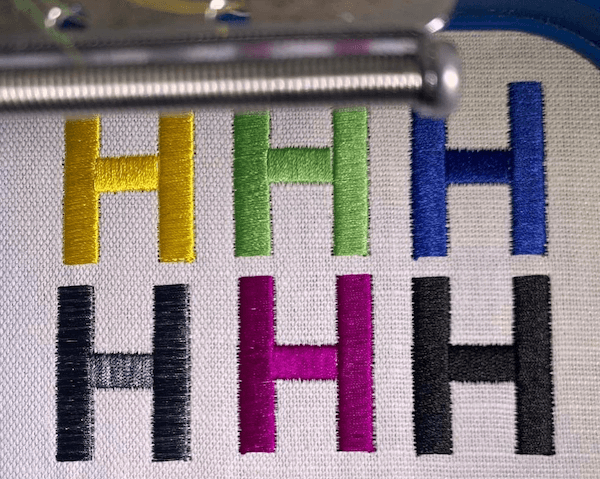
-
- When stitched out, you will check the back of the stitched sample and gauge how far under the top thread is being pulled.
- You should have 1/3 bobbin thread in the middle and 1/3 of each top thread on either side.
- If they meet in the middle, the top thread is too loose or your bobbin is too tight. (It’s getting pulled together).
- If the top thread barely shows on either side, then the top thread is too tight, or your bobbin is too loose and will eventually pull the bobbin thread up
- When stitched out, you will check the back of the stitched sample and gauge how far under the top thread is being pulled.
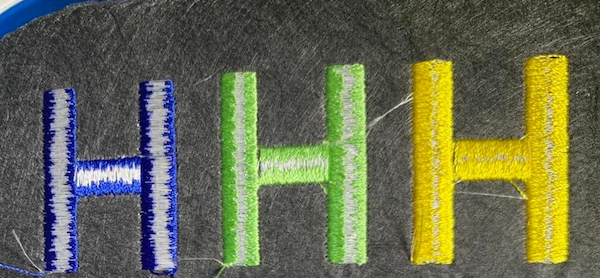
Though the H test will not tell you exactly what is happening, it will tell you if something is happening. Every embroiderer should have this file to test and use regularly.
How Do I Stop Bobbin Thread From Showing On Top?
Here are three ways to improve your stitching and get better results:
1. Keep your bobbin case and area clean and free of lint and dust.
Although getting out that can of compressed air sounds good- leave it on the shelf! Blowing, even at lower pressures, can drive fuzzies and dirt down into your machine, and you will not be able to reach them.
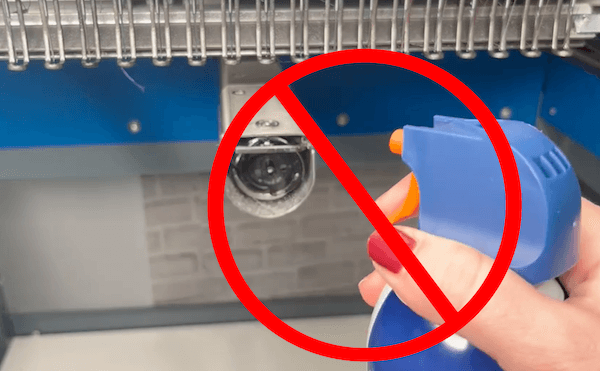
Little fuzzies can also drag the bobbin thread or force the tension flap spring open. Pay attention to your top tension in single-needle machines or your multi-needle too. Routinely check the bobbin area and thread path for debris and dust off with a soft brush. Making a dust cover for your machine will keep it clean and ready.
For the multi-needle users, make sure the tension flap on the bobbin case is clean. Slipping a business card under the flap is an easy way to remove lint and dirt. Please make sure not to bend the flap but this will help dislodge anything holding it open.
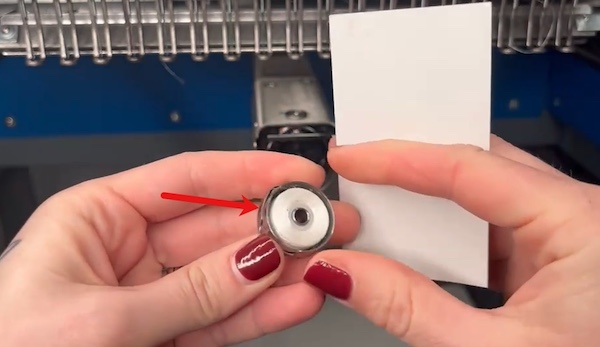
For our multi-needle friends, always follow the machine manual on oiling your machine. Dry-dragging bobbins can create problems too! A word of caution regarding oiling, more is not better. Over-oiling can also leave a puddle of oil which can slow things down.
2. Slow down your machine.
Just because your machine can go 800-1000 stitches per minute does not mean that it will produce the best stitch-out. The faster the machine goes, the less “rebound time” for the thread. The top thread can then pull up your bobbin thread.
3. Use bobbin thread for your bobbin.
It is designed to be thinner, adding less bulk to your stitch-out and allowing it to glide easily. Most bobbins come pre-wound in black or white. Magnetic bobbins are also an option for multi-needle machine users; the magnetic hold on the metal bobbin case reduces the “rebound” of the bobbin and allows the thread to be evenly released.
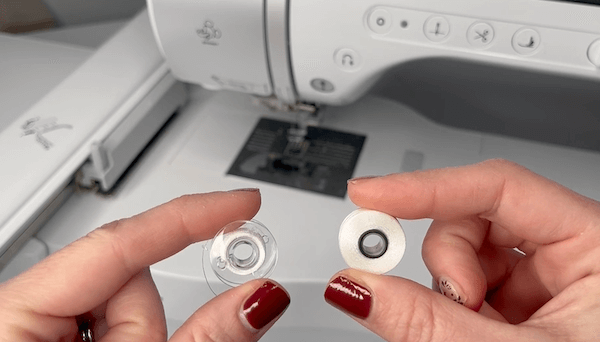
Conclusion: Bobbin Thread Mistakes Can Be Easily Prevented
Of course, this scratches the surface, but if you have to have a takeaway from this session- keep your embroidery machine clean and educate yourself about how it works! The more you understand how the stitches are made and the components of your machine, the better an embroiderer you will become.
If you want to grow your embroidery skills, check out our free Machine Embroidery Beginner Series on Youtube for informative and easy-to-understand videos which will walk you through the basics of hooping, stabilizer, thread, and more!
Ohh one last thing! Want some beautiful free embroidery designs? Don’t forget to download our Free Embroidery Legacy Design Kit today 🙂

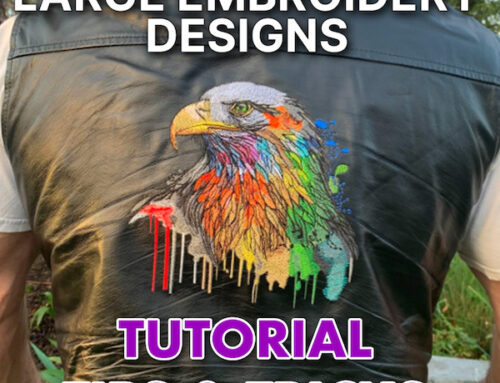
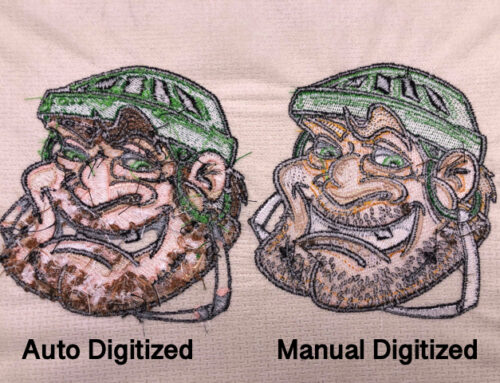
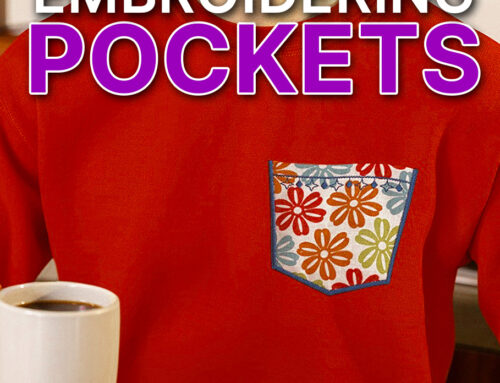
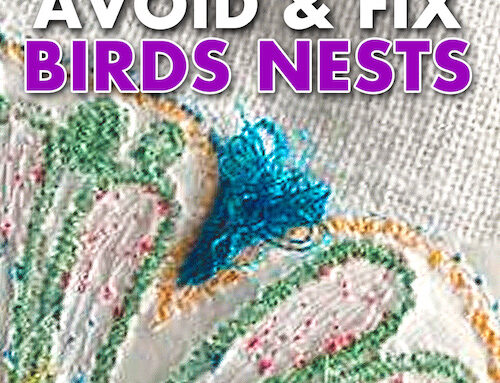
You left out properly setting drop in bobbins-on most single needle machines. To have the thread go over the top to the left. Drop it in, pull out some thread to hold. Place your finger on the top of the bobbin as you put it through it’s channels. Then pull slightly on the thread to feel that slight bit of tension. Only then, cut off the end and replace the plastic cover. This is the main problem I have found for bobbin thread showing on top. No need to mess with the bobbin case tension.
Thanks for adding that Jo! It can definitely be trial and error some times.
Thanks, I use the magnetic white bobbins except when I am embordering something like lace. that’s when I wind my own bobbins could that be what causes the bobbin thread to show through?
There can be many factors contributing to why the bobbin shows through. Is it only when you wind your own bobbins it appears on the top?
Thank you for great information on Bobbin thread, I use to have more of these but watch loading bobbin threa in bobbin case
Yes cleaning with brush .
Love your tips and yes embroidery can be fun when using proper thread and tools
Thanks for reading Ellen 🙂 glad you’re enjoying our articles.
I want to be like you plz help me to aquire knowledge of digitizing
Hi Faith, I definitely suggest starting off with our free Digitizing 101 Course. You can find it here https://www.digitizingmadeeasy.com/embroidery-digitizing-beginner-cheat-sheet/
forgot to add another possibility….from using my janome 12000 home hobby machine for hours and hours it gets hot and apparently does something to my bobbin case and ruins it. Had nothing but bobbin thread showing for my entire design, then called local janome sewing retailer and she said to change my bobbin casing. YEP, that was it! She said the hot machine can warp the casing.
Thanks for your input Elaine! Glad you were able to find out what the issue was 🙂
Hi John
A question for you I have had this problem with all the machines I have owned
My machine works just fine on normal sewing but when I use it in embroidery the bobbin thread always shows up the top and I-have to lower the bobbin tension to almost 0
As I have been sewing for most of my life and know the importance of a clean machine and bobbin case
My Machine gets regular service and I still have the same problem
I always use bobbin thread
Is there anything else I could do
Thank you
Hi Valerie,
What machine brand is it? Have all the machines you’ve owned been the same brand? Bobbin thread showing would usually be a machine/bobbins specific issue and you dealer/tech would be best advised to assist in rectifying the problem.
Hi John,
My problem is that white bobbin thead is showing only when I use black and only in tatami fills, its only with black on top, if I use any other color like blue or red, the bobbin dont show on top but when I use black, the bobbin appears on top. I try a new black thread and nothing. The only solution is that when I have to use black, I put black on the bobbin!
Greetings from Argentina! GO MESSI
Hi Giulliano, bobbin showing on the top is usually a tension issue, not a thread issue. Speed can also increase tensions on a machine, have you tried slowing the speed on the fills when running black?